On to New Beginnings
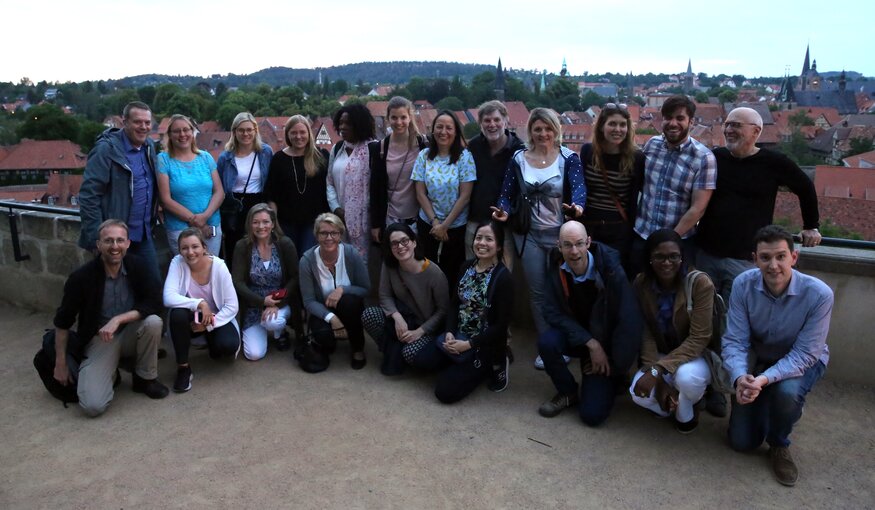
13 December 2019
Marie Haga | Marie's Corner
It is with a heavy heart that I write my last Marie’s Corner as Executive Director of the Crop Trust. I’ve had the privilege to serve this organization for almost seven fantastic years. I’ve loved every day at work, and I’ve had an amazing team with whom I have shared ups and downs. It’s actually been mostly ups and celebrations. I’m proud of what we as a team have achieved, and I know the Crop Trust’s future will be bright under the leadership of my successor, Stefan Schmitz.
Rather than trying to sum up our achievements over the last years, though, I would rather look forward. So, allow me in this Corner to give a few perspectives on the way forward – knowing very well that it is completely up to the new leadership to make decisions.
1. Long Term Partnership Agreements (LPAs):
We have an increasingly good idea of what a cost-effective, rational global system for ex situ conservation might look like. The Long-term Partnership Agreement (LPA) with IRRI was a proof of concept for the Crop Trust’s endowment-based funding mechanism. We have committed to funding the IRRI genebank in perpetuity and thereby safeguard 136,000 accessions of rice for future generations. Since several additional international genebanks are reaching performance targets and the endowment mechanism is functioning well, I hope that the Crop Trust will enter into as many LPAs as possible in the next two years. By the end of 2021, up to 80 percent of accessions managed by CGIAR genebanks may be supported through these in-perpetuity agreements.
2. National genebanks:
The Crop Trust should intensify its work with national collections by building on the lessons learned from working with the CGIAR genebanks. The Seeds4Resilience project is, I’m sure, only the beginning. The funding model that has been developed with Germany for national genebanks, which consists of support for upgrading along with an endowment contribution for long-term conservation, is exactly what the Crop Trust should pursue with other donors in the time ahead. The German Seeds4Resilience project funding covers five genebanks in Africa. Other donors should be encouraged to make use of this model and contribute to the upgrading and long-term funding of other important genebanks around the world.
3. Svalbard Global Seed Vault:
The Vault is now 100 percent structurally sound thanks to additional generous funding from the Norwegian Government. I think there are issues with the visitors policy that need to be addressed, though. The functioning of the Vault needs to be as transparent and accountable as possible. It’s worked in the past, and there is enough lack of trust in this area already. The Crop Trust needs to continue working closely with the Norwegian authorities on this.
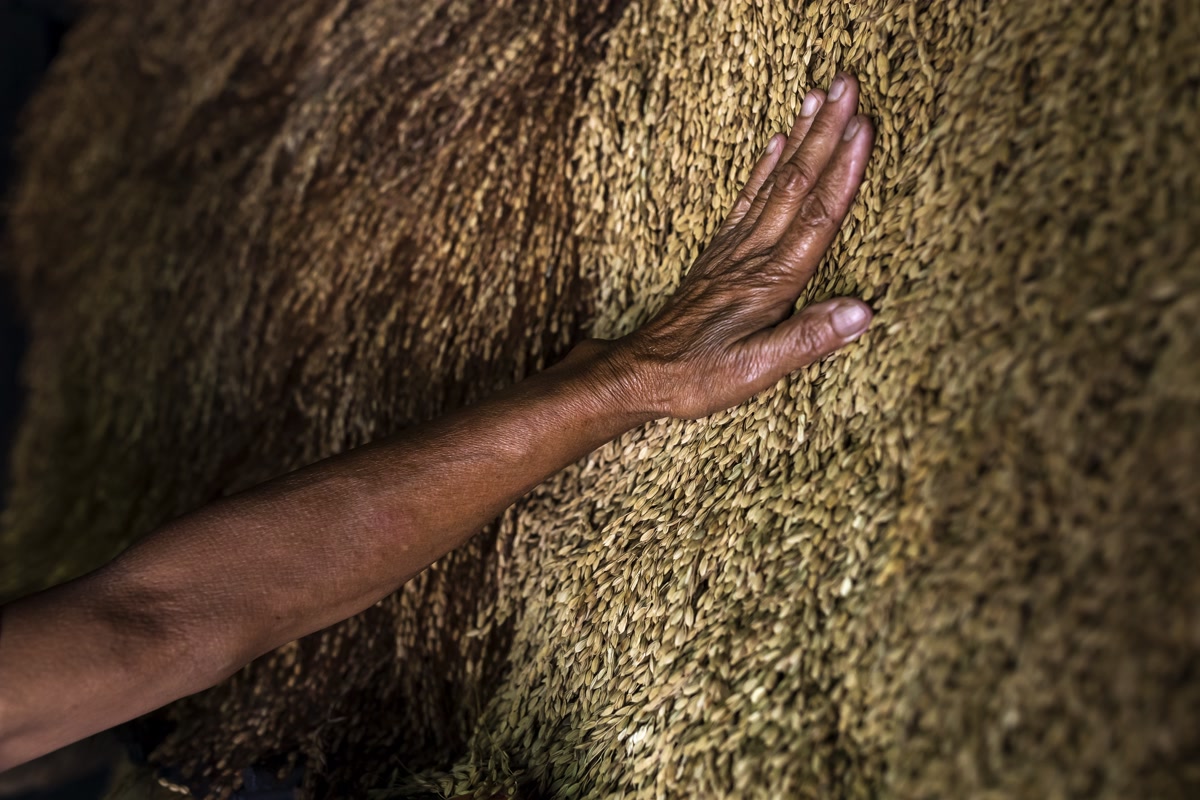
On World Food Day, 16 October 2018, the Crop Trust and the International Rice Research Institute (IRRI) signed a long-term partnership agreement, which guarantees permanent funding for the world’s largest rice collection.
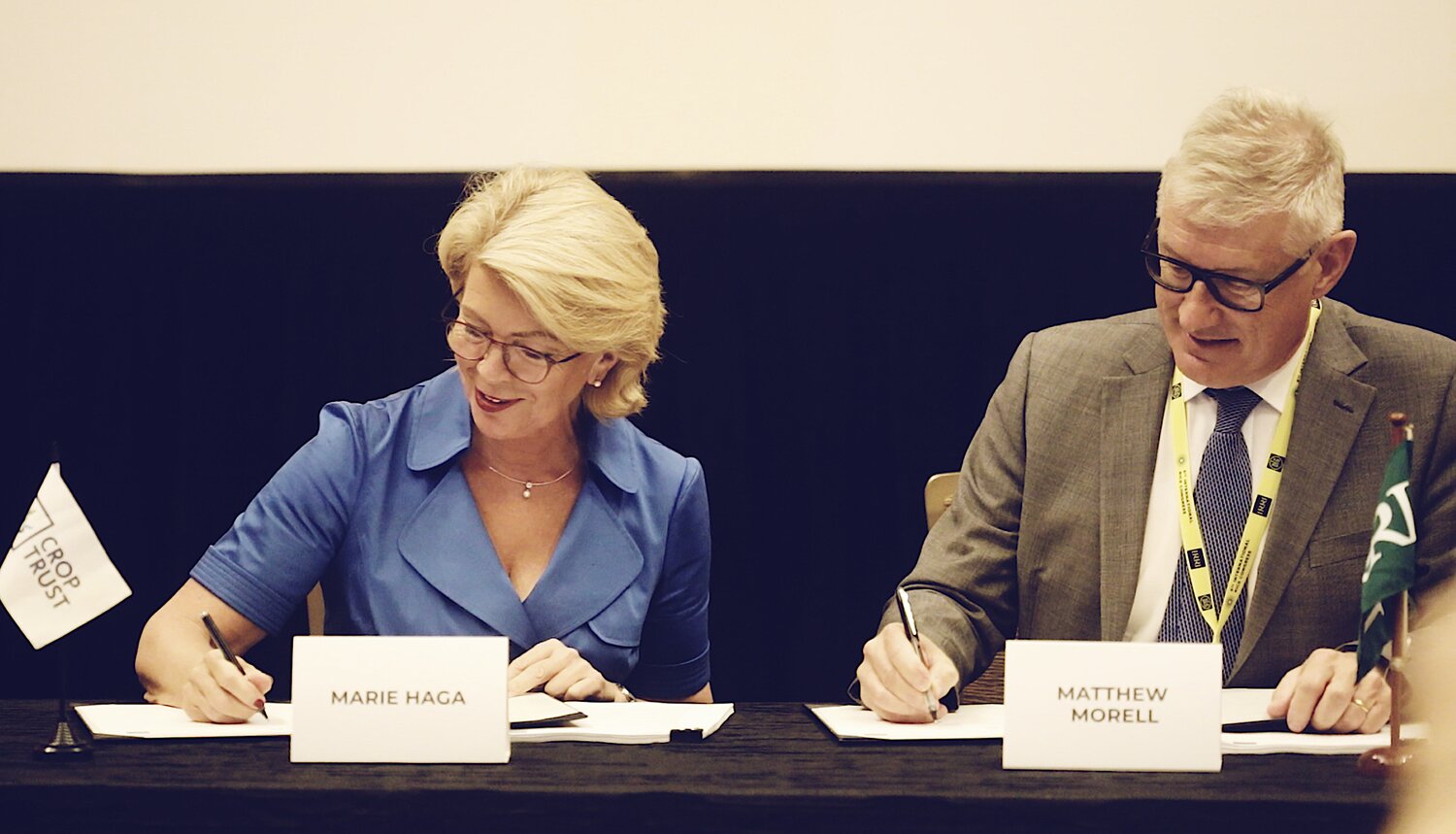
Marie Haga, Executive Director of the Crop Trust, and Matthew Morrell, Director General of IRRI, signing the first long-term partnership agreement that will fund the essential operations of the IRRI genebank, forever.
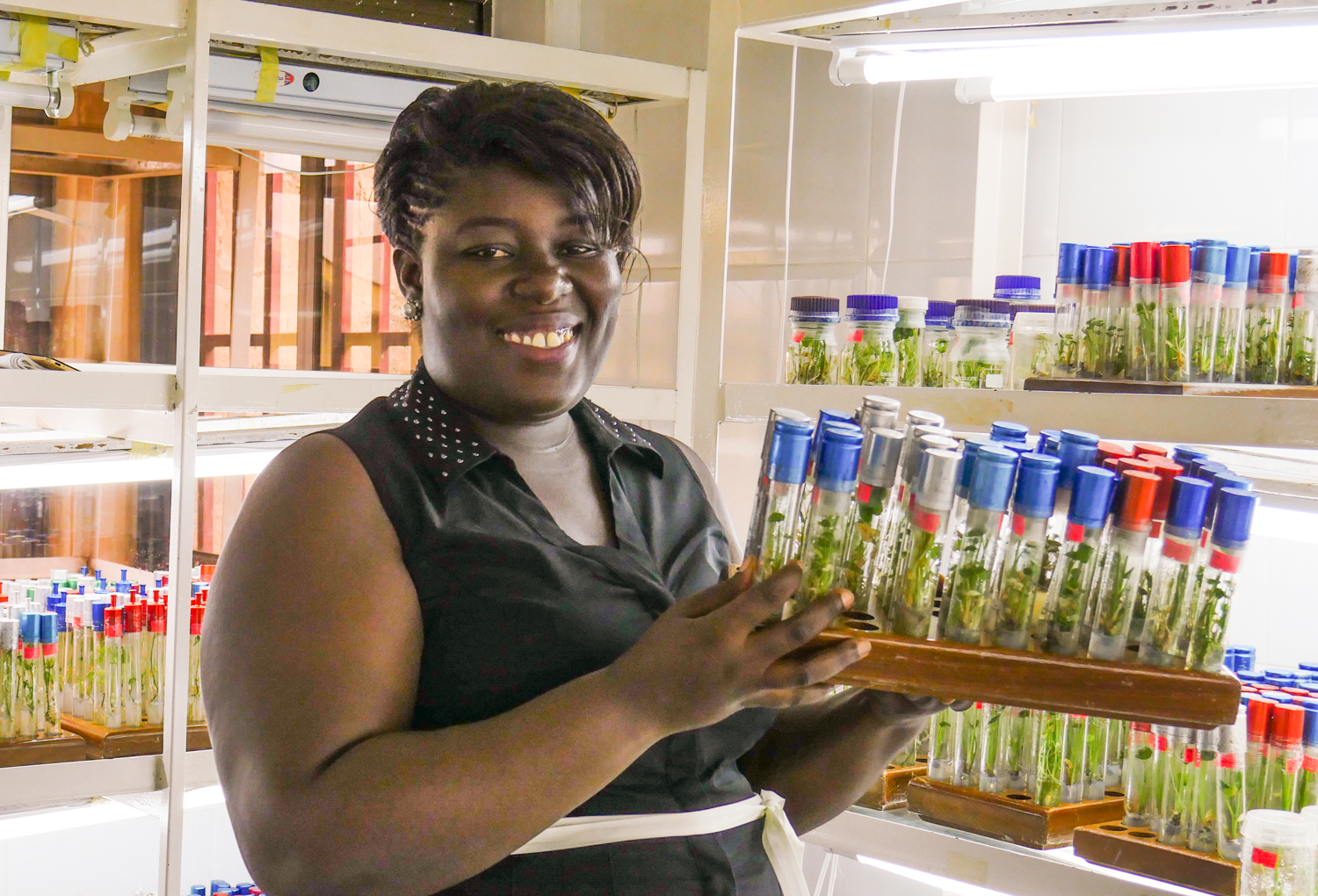
The Ghana National Genebank is one of the five genebanks in Africa taking part in the Seeds4Resilience Project. Photo: Nora Castaneda-Alvarez/Crop Trust
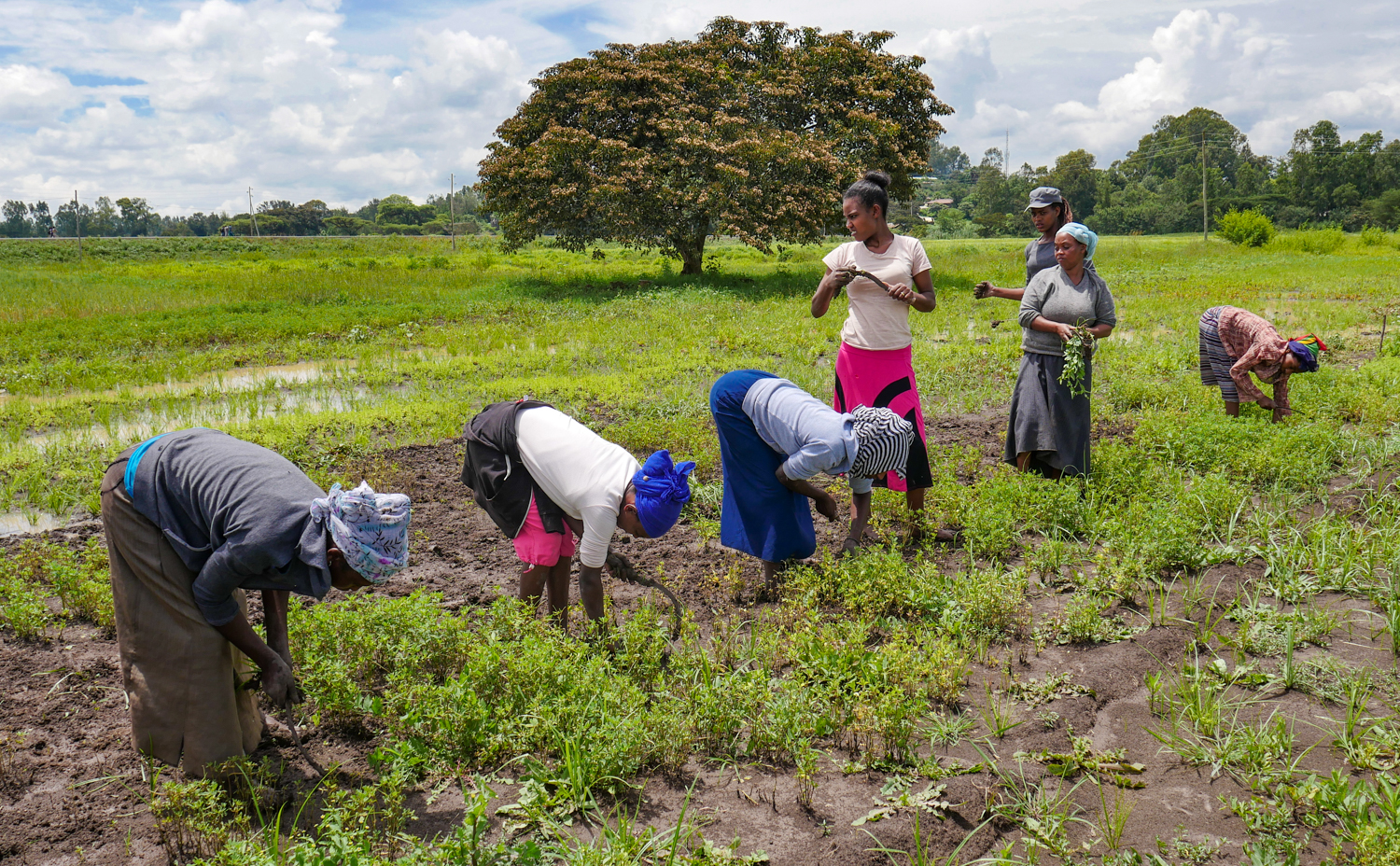
Women working at the Ethiopian Biodiversity Institute clearing a regeneration plot of fenugreek. The Ethiopian genebank is part of the Seeds4Resilience Project. Photo: Nora Castaneda-Alvarez/Crop Trust
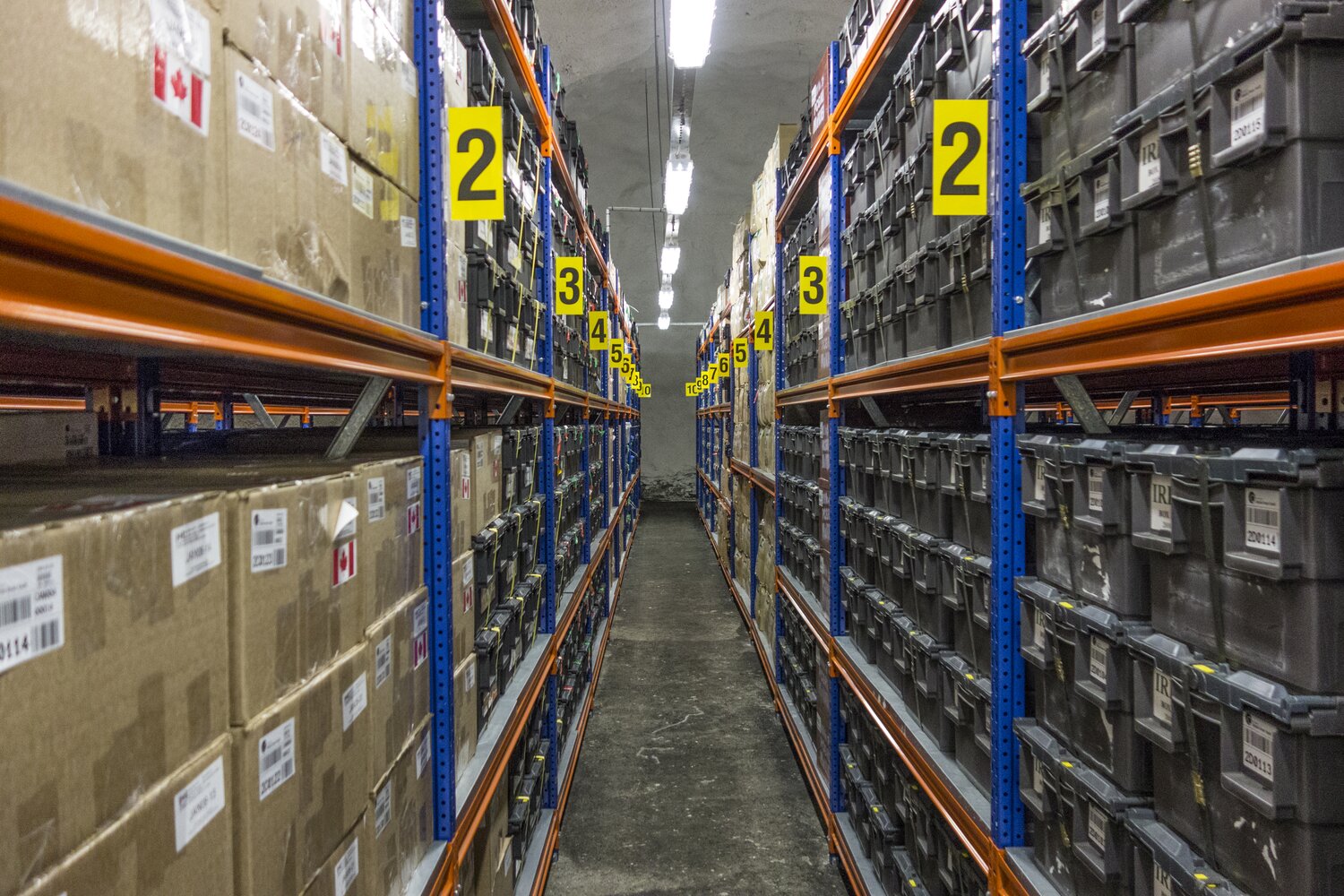
Shelves inside the Svalbard Global Seed Vault stacked with boxes of seeds from around the world, safeguarding the foundation of our foods at -18°C.
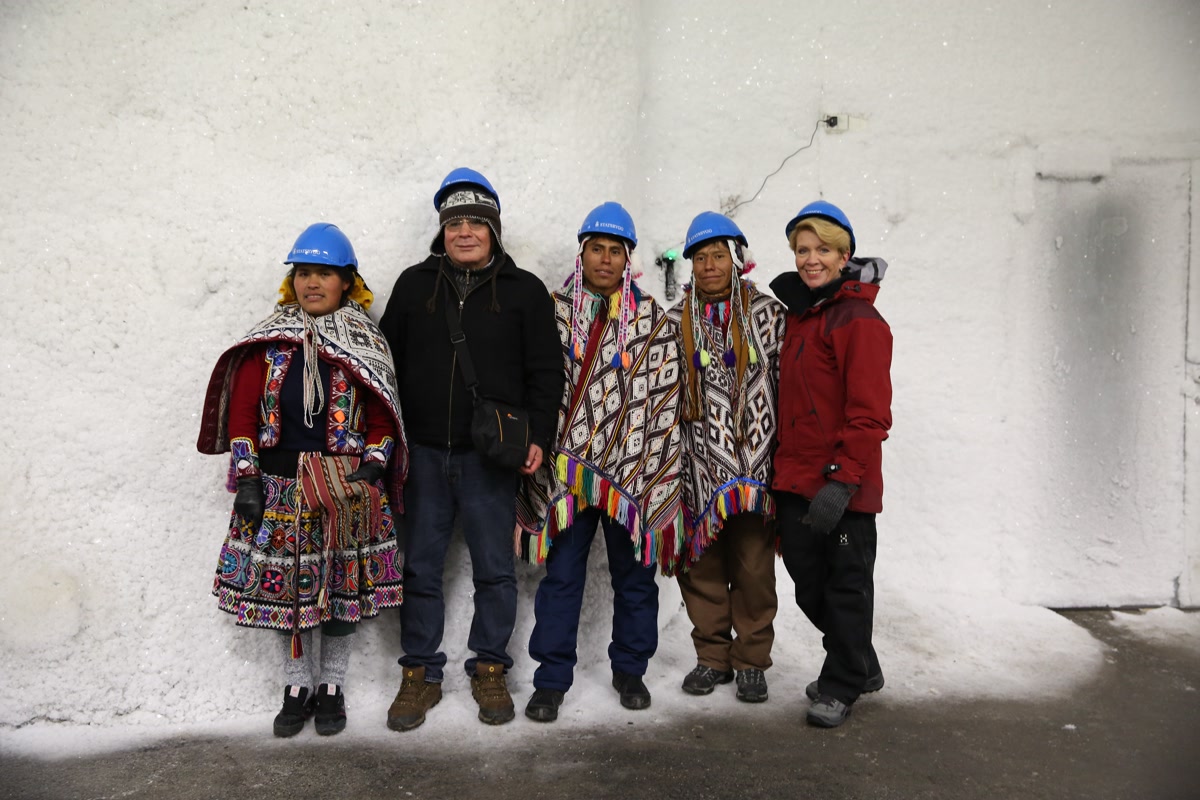
Brisaida Sicos Palomino (Parque de la Papa), Alejandro Argumendo (Asociación ANDES), Walter Pacco Chipa (Parque de la Papa), Ricardo Pacco Chipa (Parque de la Papa) and Marie Haga standing in front of the vault room at the Svalbard Global Seed Vault, after the Peruvian delegation made a deposit of Andean potato varieties.
4. Information systems:
The global system for ex situ conservation is completely dependent on well-functioning information systems. The Plant Treaty’s Global Information System (GLIS) is beginning to take shape, but there are opportunities for closer integration of existing systems, and a reduction in duplication of efforts.
5. Success Beyond the Endowment:
There is more to the Crop Trust’s success than the size of its endowment. This should be better communicated, and appreciated. The endowment is an important component of the Crop Trust’s work and indeed what makes the organization unique. The mechanism works well and has proven its worth. However, other aspects of the global system are in urgent need of support. Rescuing collections at risk, gap-filling collecting, upgrading national and regional genebanks, and promoting the use of crop diversity are just some of the areas that need more investment. Let me add that there is far too little work being done globally on evaluation and pre-breeding. The Crop Trust is supporting pre-breeding projects, and this should continue.
6. Future Funding:
After eight years of overseeing the financial management of the core operations of the CGIAR genebanks, we know a lot more about the costs involved. We have been working as a group under the Genebank Platform to identify efficiencies, rationalize efforts and be more strategic in the use of funds. By the end of 2020, we will have an updated estimate of the budget required to support the CGIAR’s Article 15 collections. Where will the money comes from? Future funding for the endowment will most likely continue to come from governments. For project funding, I think the Crop Trust should find international partners that work directly with grassroots organizations? to create a mechanism where funding for genebanks from the endowment is combined with concrete funding for farmers. When speaking to the private sector, it is often difficult to argue the case for support to the Crop Trust. They always ask how our work connects to farmers’ fields. Why not create a link between the food and beverage industry and farmers in order to attract private sector funding for the Crop Trust?
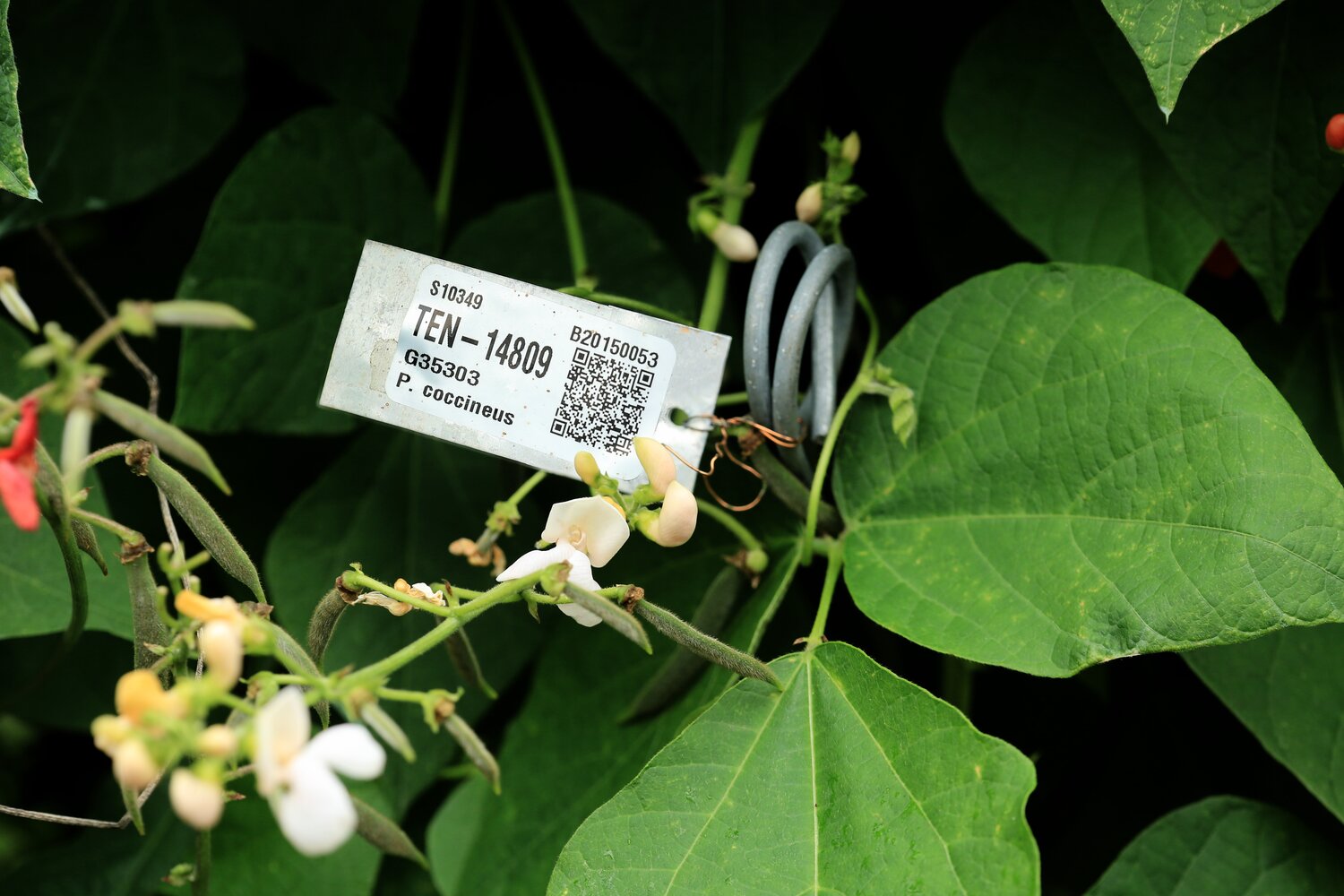
The International Center for Tropical Agriculture (CIAT) in Colombia labels their accessions with QR codes to facilitate genebank management. The Crop Trust supports all CGIAR genebanks in establishing quality management systems (QMS), in which barcoding plays a big role.
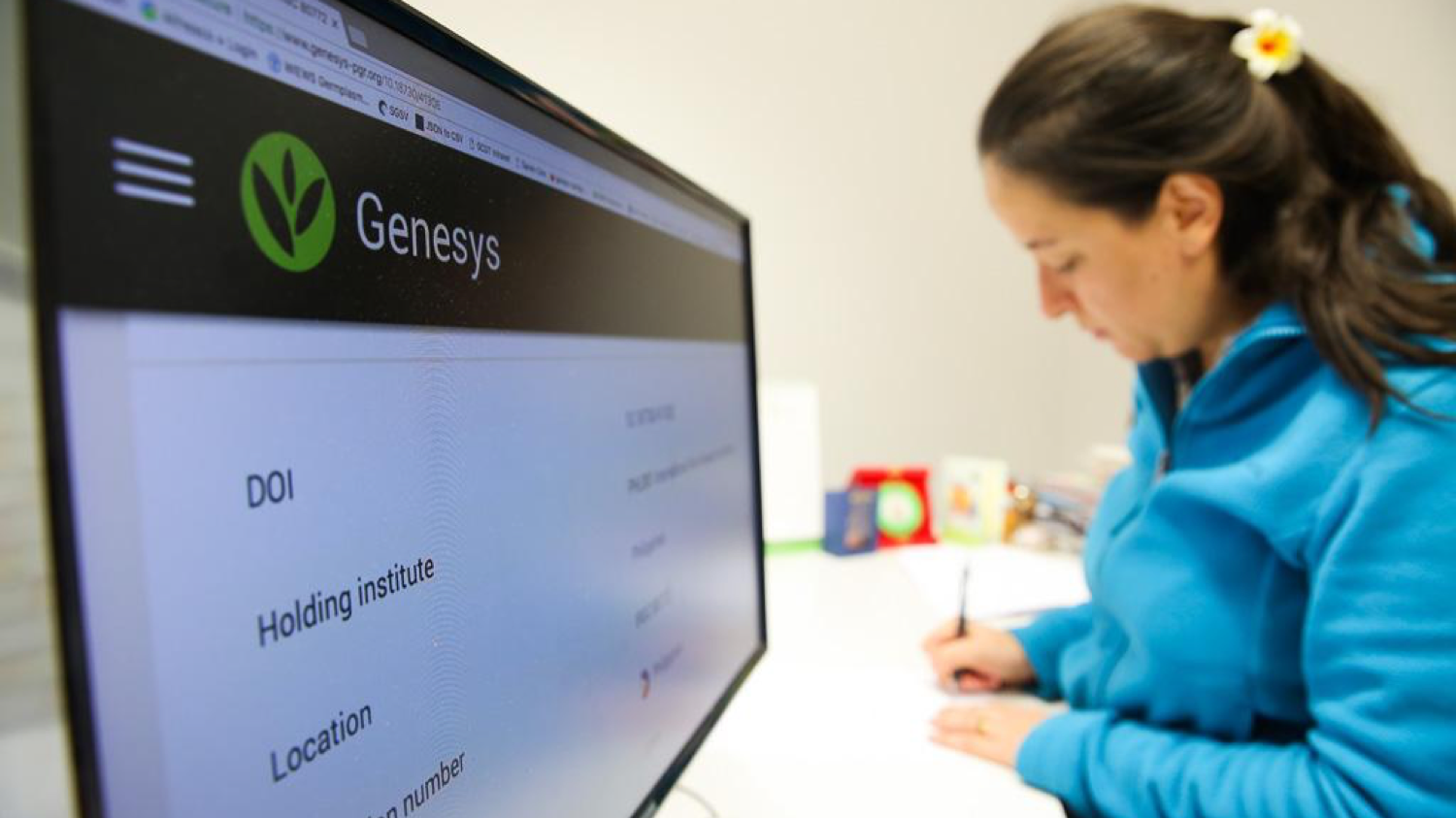
The Crop Trust is building information systems to help genebanks manage their data and users to search the crop collections they hold. Genesys, a free-to-use, publicly accessible, online database of plant material held in genebanks around the world, contains information on about four million samples, roughly half of the estimated total number globally.
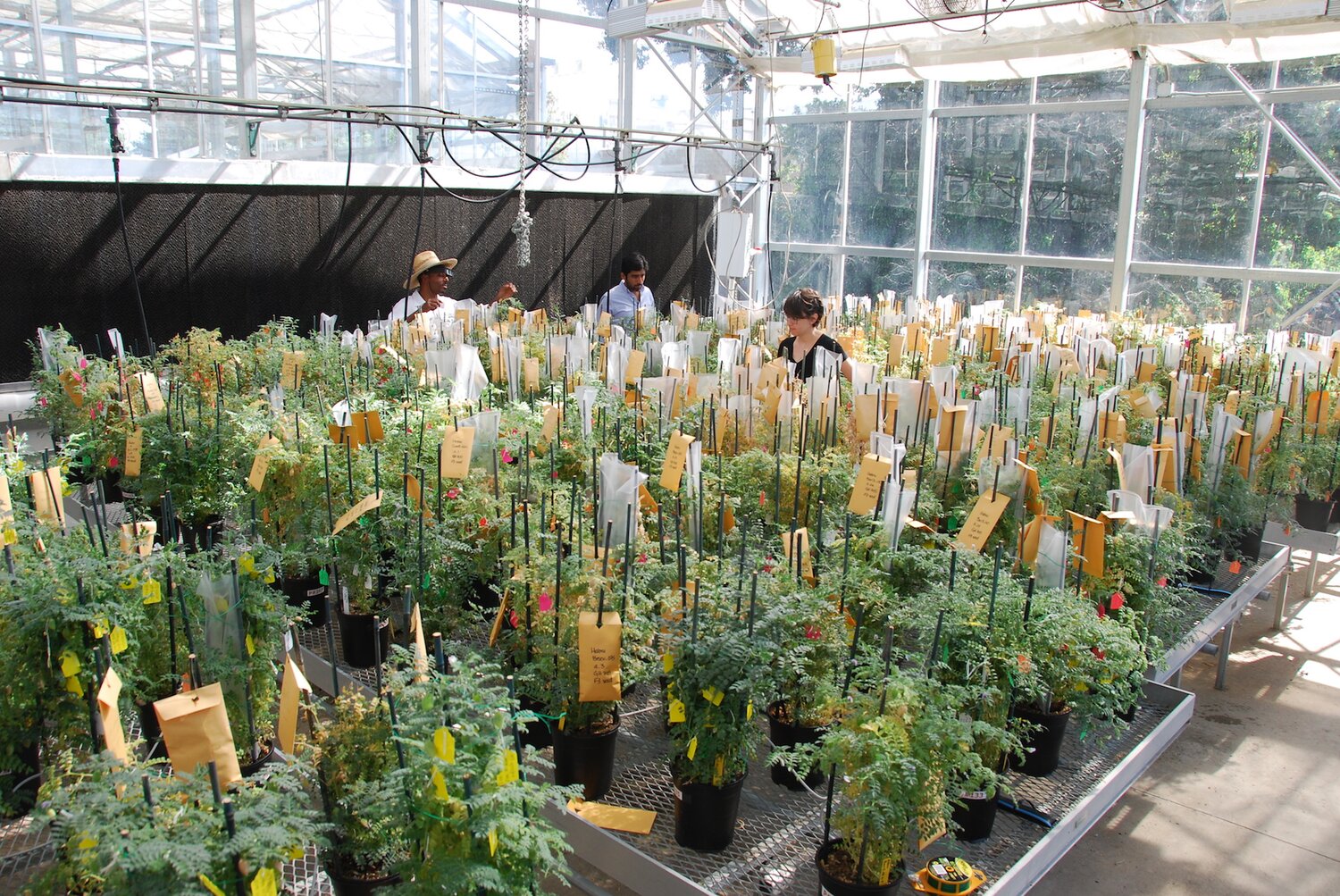
Chickpea pre-breeding work at CWR Project partner Feed the Future Innovation Lab Climate Resilient Chickpea based at the University of California-Davis.
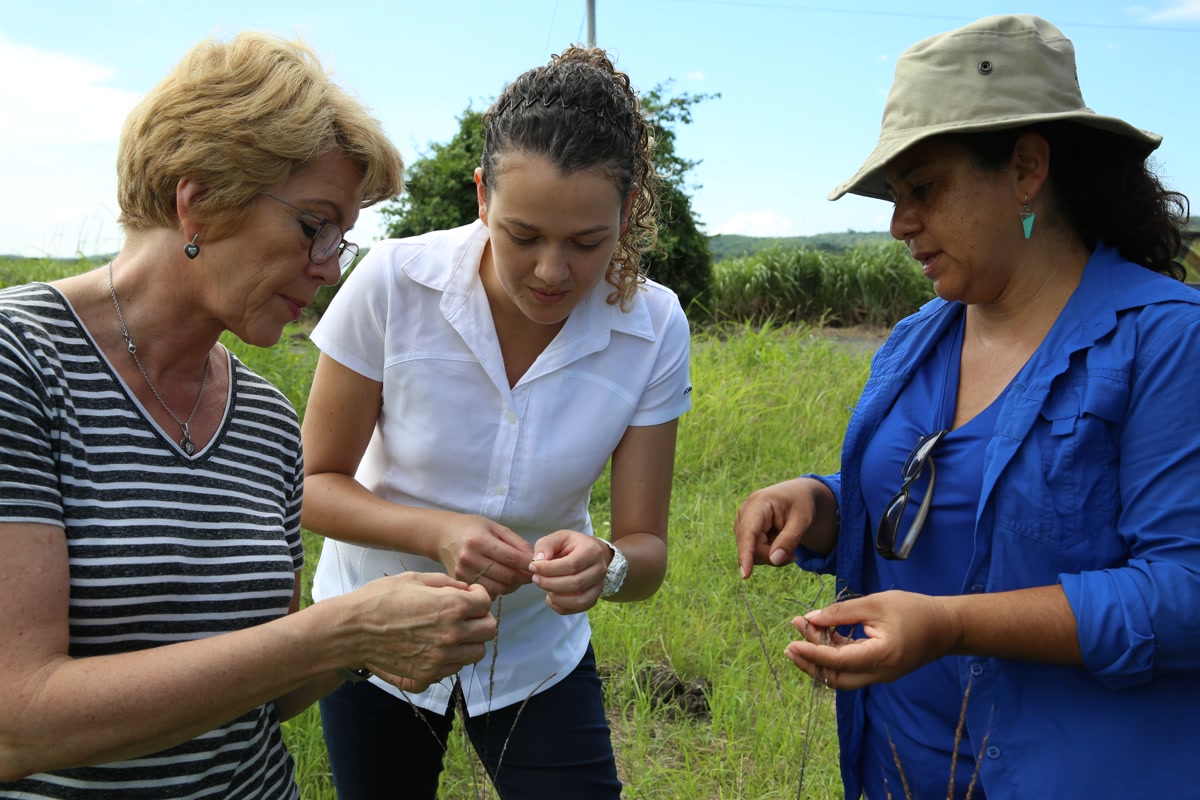
In the Guanacaste region of Costa Rica, Marie Haga was invited as an observer to accompany our CWR collecting partners from the University of Costa Rica (UCR) on a wild rice collecting expedition.
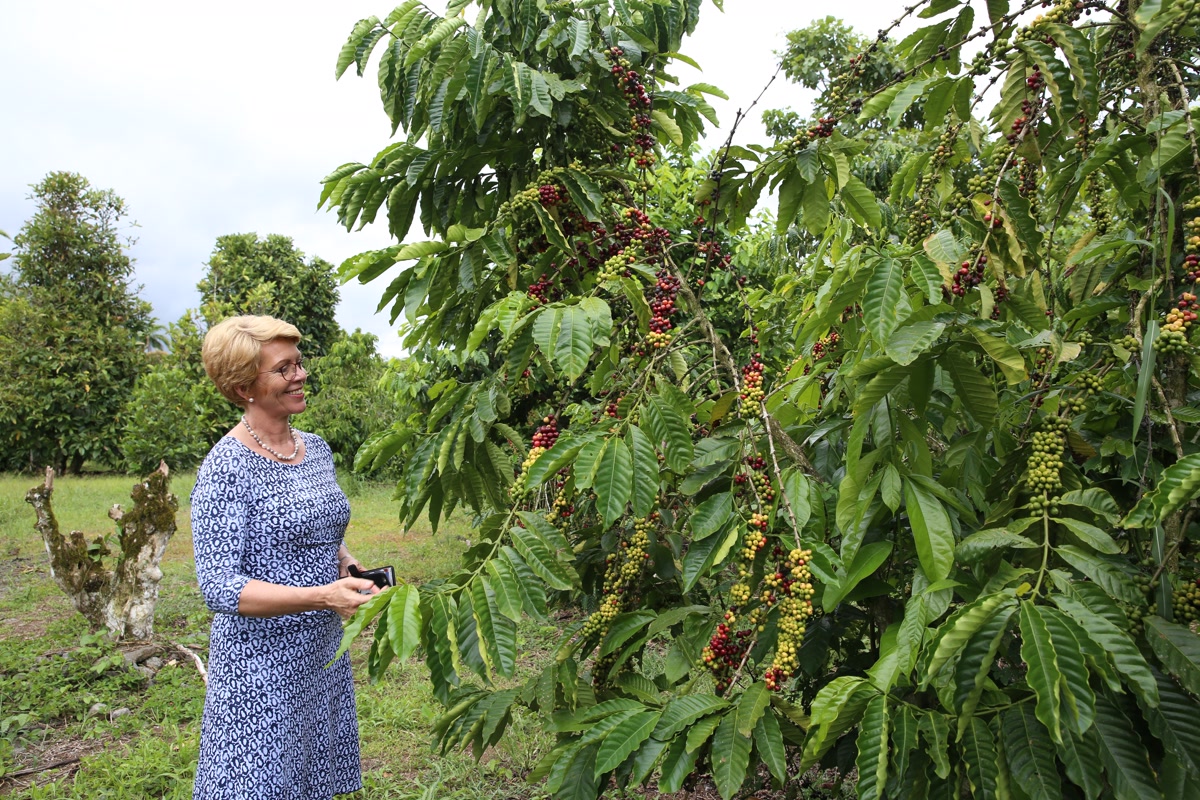
Marie Haga visiting the international coffee collection at CATIE (Centro Agronómico Tropical de Investigación y Enseñanza) in Costa Rica. The collection consists of almost 2,000 types of domesticated and wild coffee varieties from eleven species.
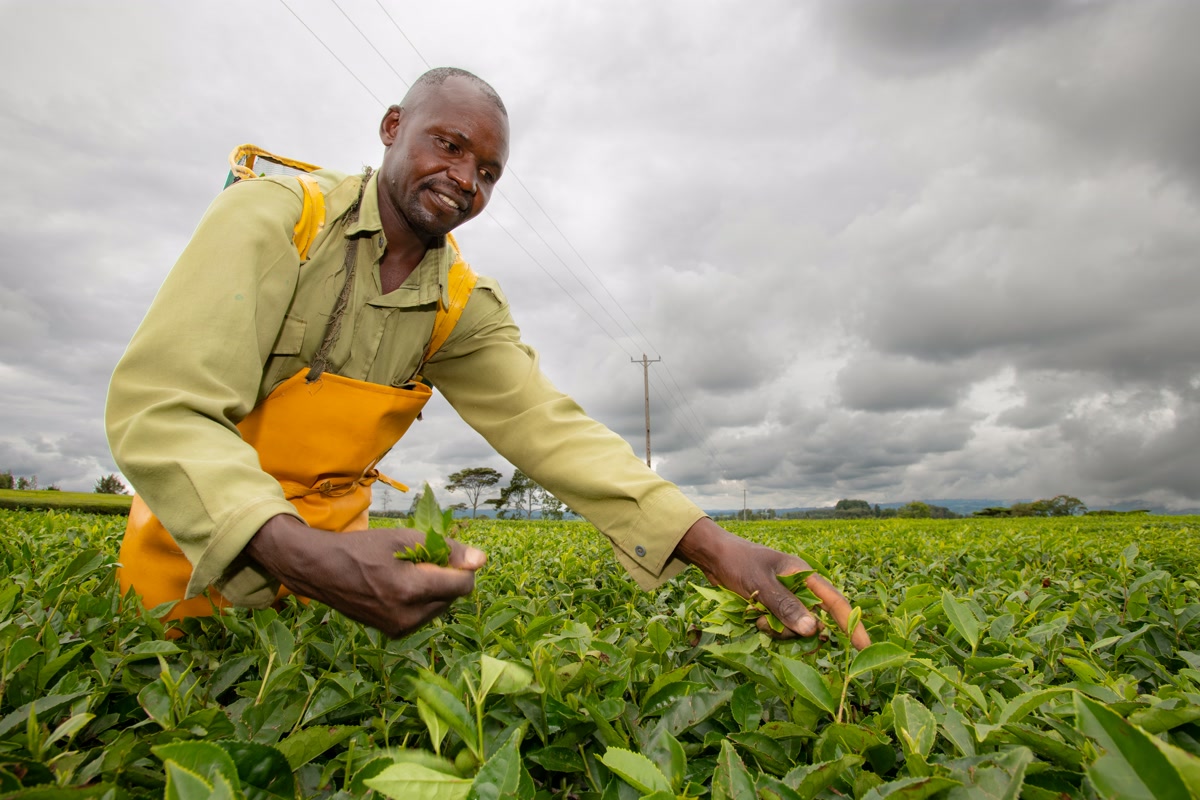
Plucking tea at Unilever plantation in Kericho, Kenya. Consumer goods company Unilever is supporting the study calling for a global effort to improve conservation of tea plants in genebanks.
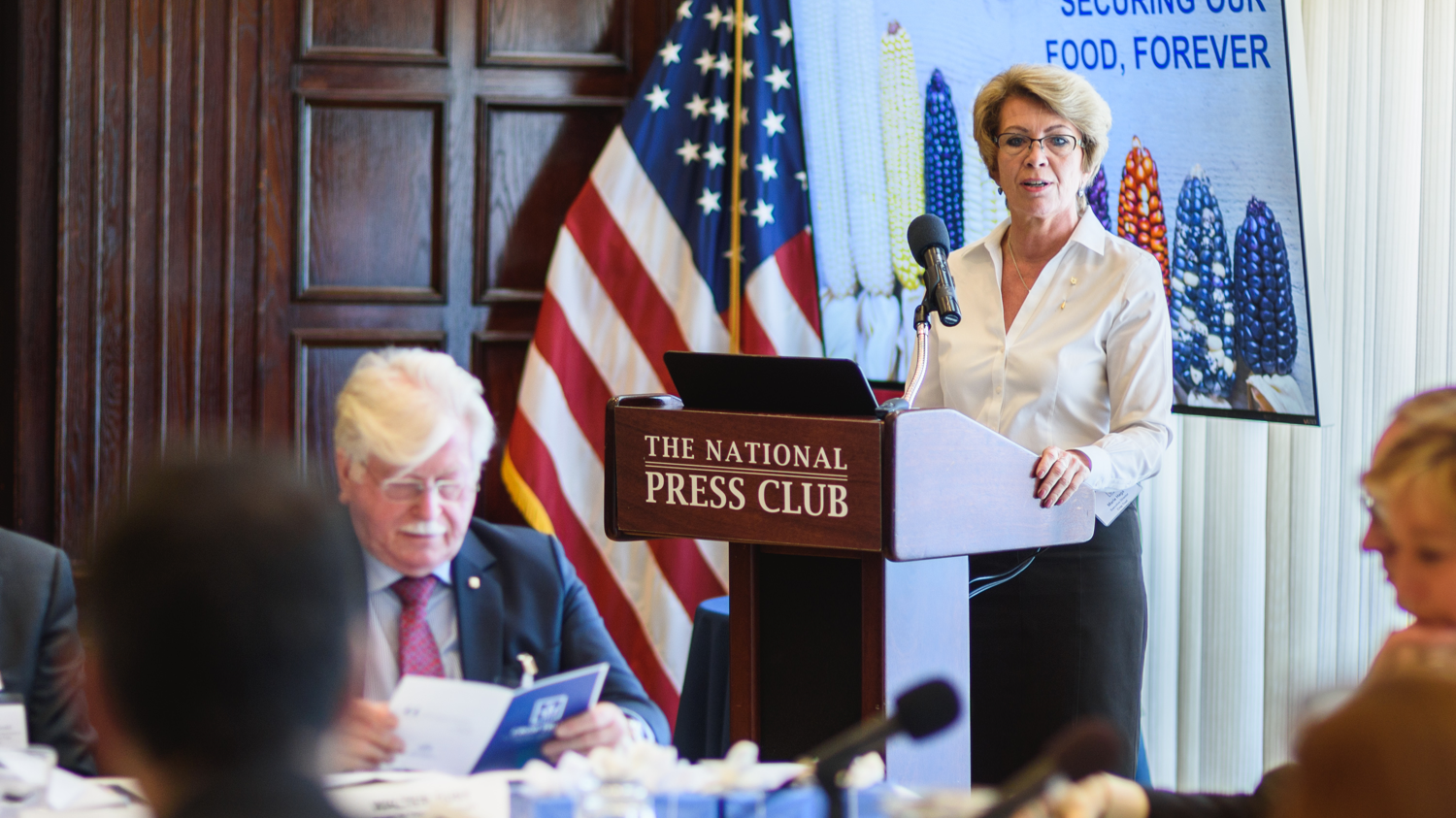
Marie Haga speaking at the Crop Trust’s International Pledging Conference in Washington D.C. The Pledging Conference brought together representatives from governments, private organizations and multi-lateral institutions from around the world to make a joint commitment to combat world hunger by safeguarding crop diversity.
So much before I walk out of the door of the Crop Trust as Executive Director on 12 December. However sad to leave the organization that has given me so much, I am excited to start as Associate Vice President for External Relations and Governance in IFAD in early January. This means I’ll still be part of the family. I hope to be able to continue cooperation with many of the individuals and partners I’ve worked with during my tenure at the Crop Trust.
A big thank you to my colleagues in Bonn, to the Executive Board and not least to our wonderful Board Chair, Sir Peter Crane. Thank you to all the donors and other partners around the world. It’s been a privilege to work with you. Together, we have taken the Crop Trust to where it is today, and it is a great place.
My best regards,
Marie
